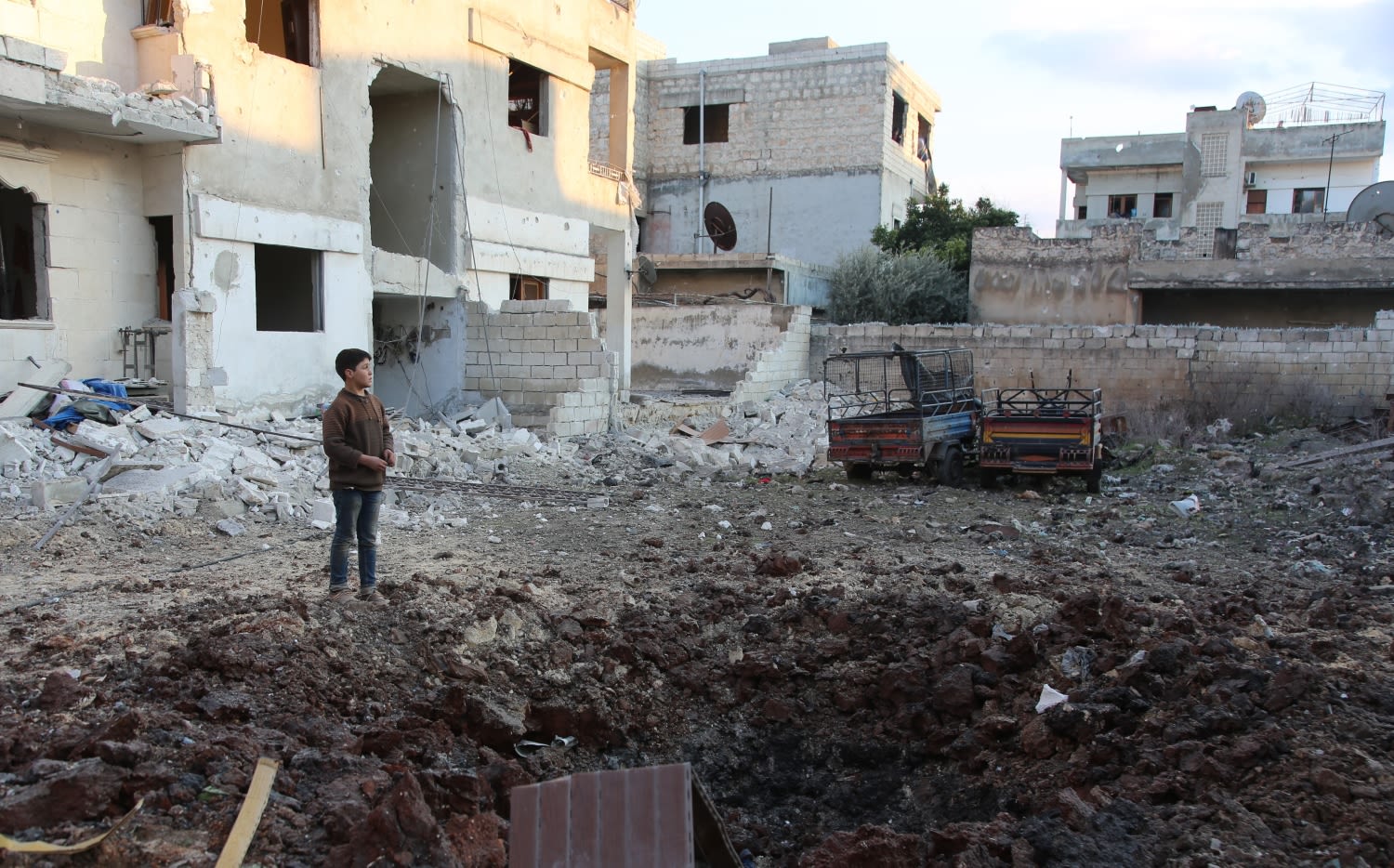THE POWER OF A SAFE PLACE TO PLAY
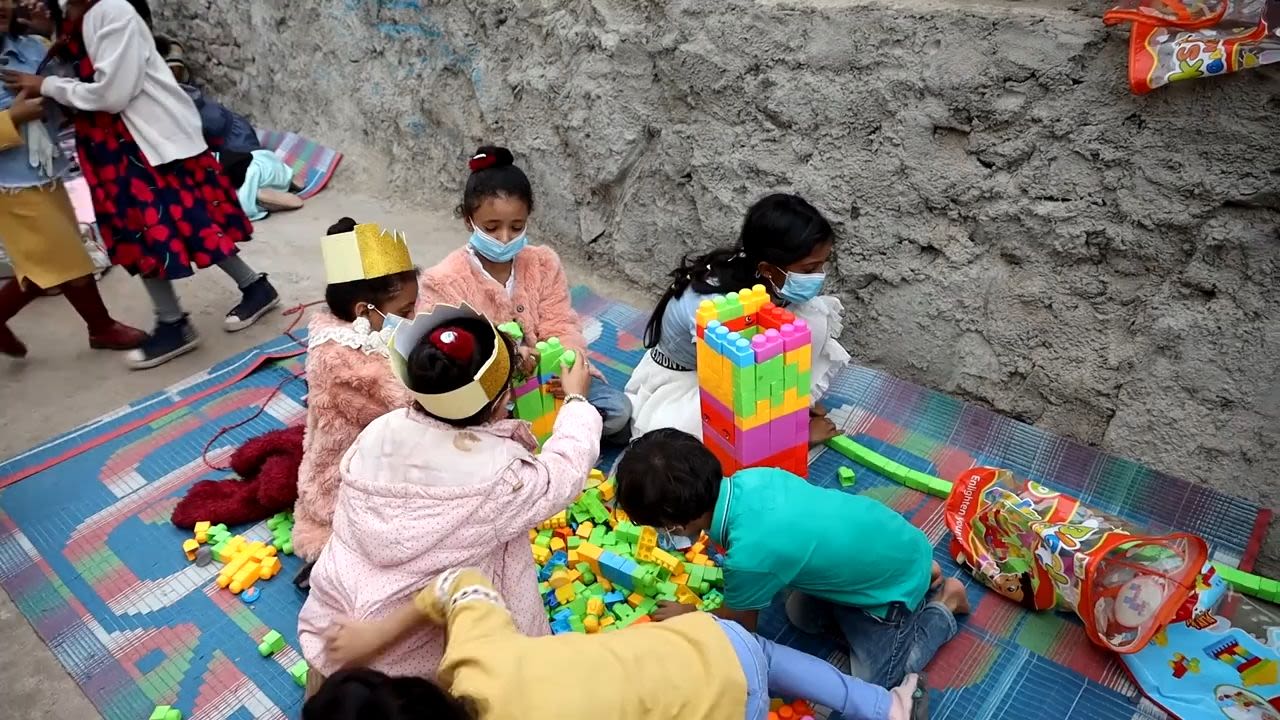
More children than ever before are living in conflict zones.
They are growing up in insecure and frighteningly challenging environments.
Fighting, violence, destruction of homes and communities, as well as loss of family, and schools can affect children’s physical and mental well-being. Without the right support, the psychological toll of conflict on children can be huge, with lifelong impacts.
Furthermore, additional insecurities around money, food, warmth and shelter can cause stress to caregivers and lead to abuse and anxiety at home. This has been shown to have a significant influence on children’s well-being and long-term development.
There is still a stigma around mental health in many places, often meaning children do not get the support they desperately need.
For children in places like Syria, Ukraine and Yemen, surviving is just the beginning.
Every child, no matter where they live, deserves to live a safe, happy and healthy life.
Save the Children has been able to help children to better cope with their experiences through mental health, and psychosocial support, often delivered through our Child-Friendly Spaces.
These are safe spaces where children can redevelop emotional relationships and resume social practices that have been interrupted by conflict. This is vital to help children overcome what they have experienced.
Continue scrolling or click the menu along the top to learn how Save the Children supports children's well-being in some of the world's most challenging conflict zones of Syria, Ukraine and Yemen.
* Names have been changed to protect identity.
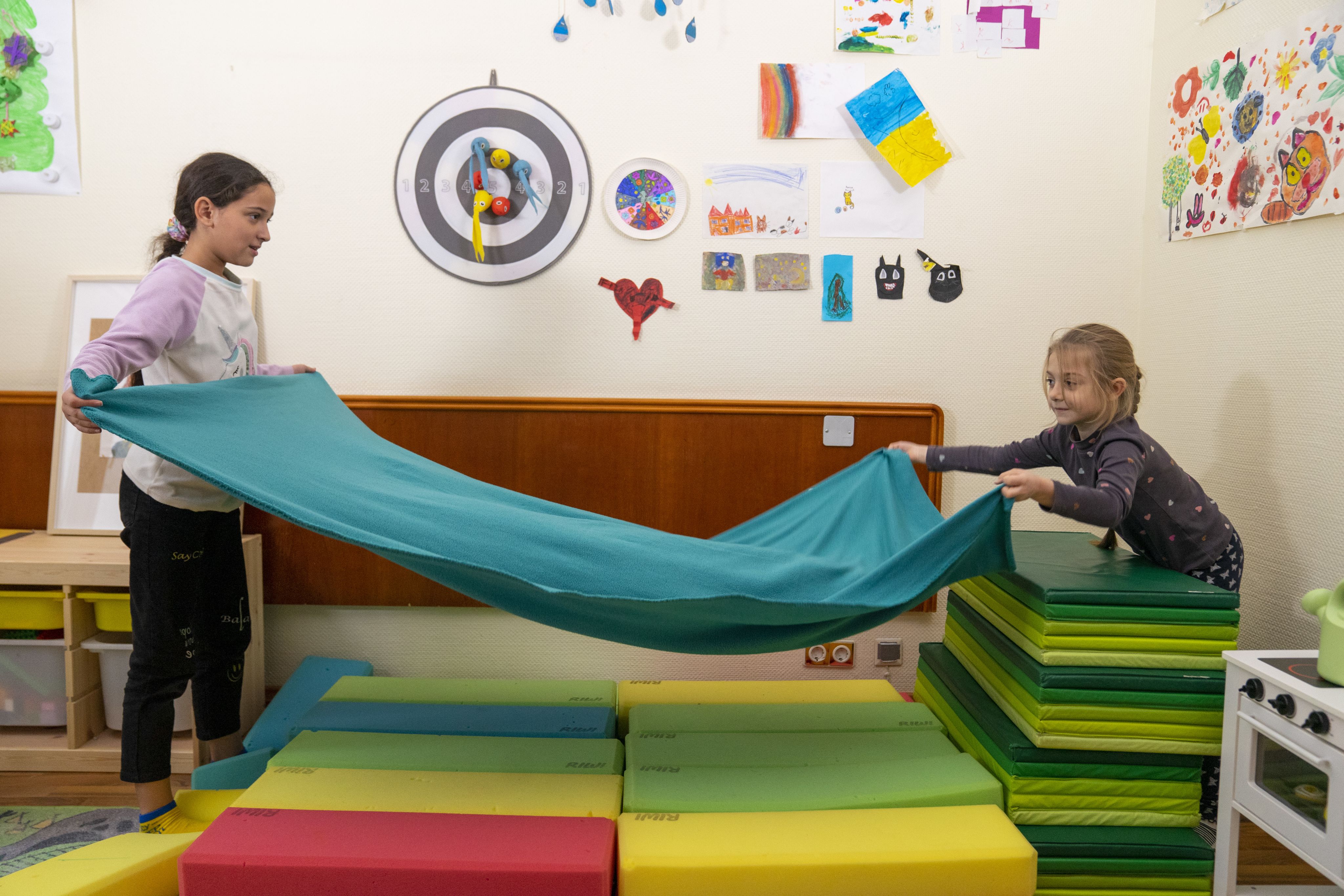
Take a look inside a Child-Friendly Space
What's inside one of Save the Children's Child-Friendly Spaces?
These amazing places might look like simple play areas, but ask any child and you will know they are so much more.
They allow children to be just that - children. They are able to play and recover. They also allow our specially trained staff to identify and respond to issues such as abuse, exploitation, trafficking and separation from their caregivers. Child-Friendly Spaces are vital to ensuring children get the support they need in an emergency.
Culturally appropriate toys
These encourage children to be creative and play with their friends. Sourcing these locally supports the local economy.
Collaborative games and marbles
These give children opportunities for socialising, identifying and managing emotions, problem-solving, critical thinking and learning. It helps focus their attention away from negative thoughts and experiences.
Sports equipment such as footballs, cricket bats and badminton sets
If a child is anxious, stressed or sad, physical activity can really help them to manage their emotions. Physical activity is important for well-being – it helps children to improve sleep. Sport can help children to be part of a team, make friends, address divisions between groups in a new community, and to help rebuild trust.
Animal toys
These can help children to act out things they might not want to talk about: they can talk about the ‘angry elephant’ or the ‘sad lion’. It can be easier for some children to talk about animals than people.
Balls
Keeping healthy is essential during an emergency, and balls encourage movement. Providing some space to play and move their body is vital for a child’s development.
Storytelling
Books, pictures, and a quiet reading area are all ways that we encourage basic literacy and numeracy while helping children to relax, escape, and think about happier times.
Trained support staff
Child-Friendly Spaces offer support not just for children but for their families too. They are also a gateway to identifying children who need more support. Caring, trained staff help children and their caregivers to access other services they need, which can include classes for parents and referrals to other sources of help.
Blocks
Blocks help younger children improve their fine motor skills. They help children focus on a specific task and take their minds off other things that might be worrying them, much like an adult might use meditation or mindfulness. Building blocks help them to switch off and refocus their thoughts.
Padded play mat
Adults can sit down with children at eye level to communicate with them more effectively. It can also help children deal with intrusive thoughts and emotions through physical activity.
Art supplies and stationery
Art gives children an opportunity for expression, creativity, self-confidence, and allows them to process the difficult things they have witnessed. Children are given structured activities as well as free time to use the supplies in a way they choose.
A safe place
The Child-Friendly Space can be a tent or basic temporary construction if no suitable facilities exist.
In Syria, Ukraine and Yemen, Save the Children programmes offer a variety of activities to support children’s mental health and psychosocial well-being.
To support children in the best way we can, there is something for everyone. There is something for the animal and game lovers, the artists, as well as the crafty, playful and sporty ones.
Therapy Dogs

For the animal lovers
In Kyiv, Ukraine, Save the Children is supporting Your Way, an NGO running Child-Friendly Spaces and mobile groups which offer support to children and their families via specialists - including canine therapists.
9-year-old Victoriya* lives outside of Kyiv, Ukraine with her family. To help Victoriya process her experiences of the war in Ukraine, she has benefitted from canine therapy with Parker the golden retriever.
Parker is a therapy dog. Therapy dogs - or any therapy animal - can help children to open up more easily. Nataliya is a canine therapy specialist who works with Victoriya. She explains:
A canine therapy dog is focused on human stress. It’s focusing on finding and reducing stress.

Nataliya (left) and Olena (right), canine therapy specialists, with therapy dogs golden retriever Parker and border collie Best at a school outside of Kyiv, Ukraine. Photo: Oleksandr Khomenko / Save the Children.
Nataliya (left) and Olena (right), canine therapy specialists, with therapy dogs golden retriever Parker and border collie Best at a school outside of Kyiv, Ukraine. Photo: Oleksandr Khomenko / Save the Children.
Once Parker senses a child's stress he reacts. Nataliya can then read this reaction to identify what Parker sees in the child.
The main and basic thing that a dog does is a mechanism called grounding. This is when people [can] feel themselves here and now and switch to other thoughts instead of thinking about the past or worrying about the future.
Victoriya shares her experience of meeting Parker:
We were playing with the dog. The way we were playing felt like love from Parker.

Viktoriya poses with therapy dog Parker at a school outside of Kyiv, Ukraine. Photo: Oleksandr Khomenko / Save the Children.
Viktoriya poses with therapy dog Parker at a school outside of Kyiv, Ukraine. Photo: Oleksandr Khomenko / Save the Children.
Please donate to help children living in conflict in countries like Syria, Ukraine and Yemen.
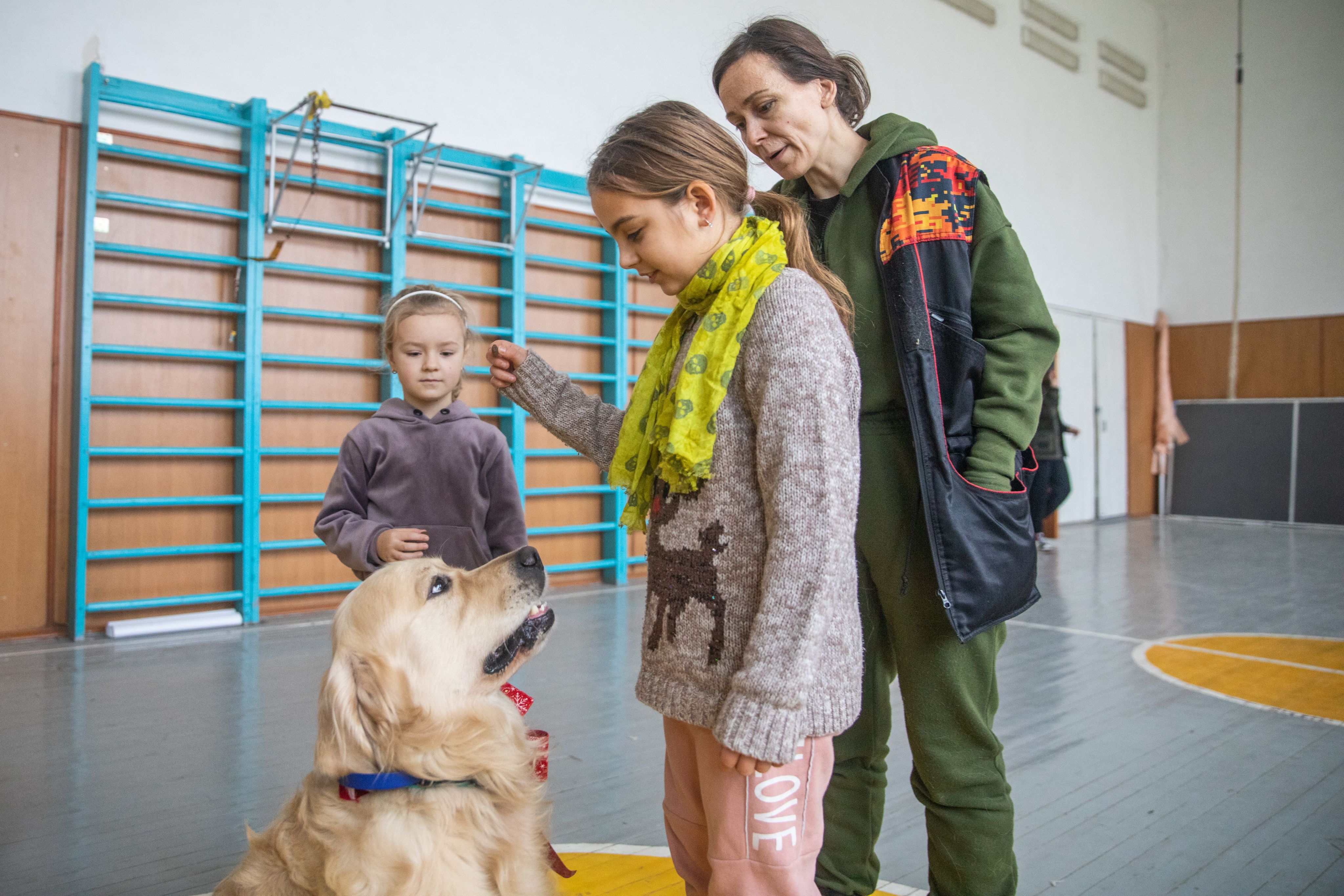
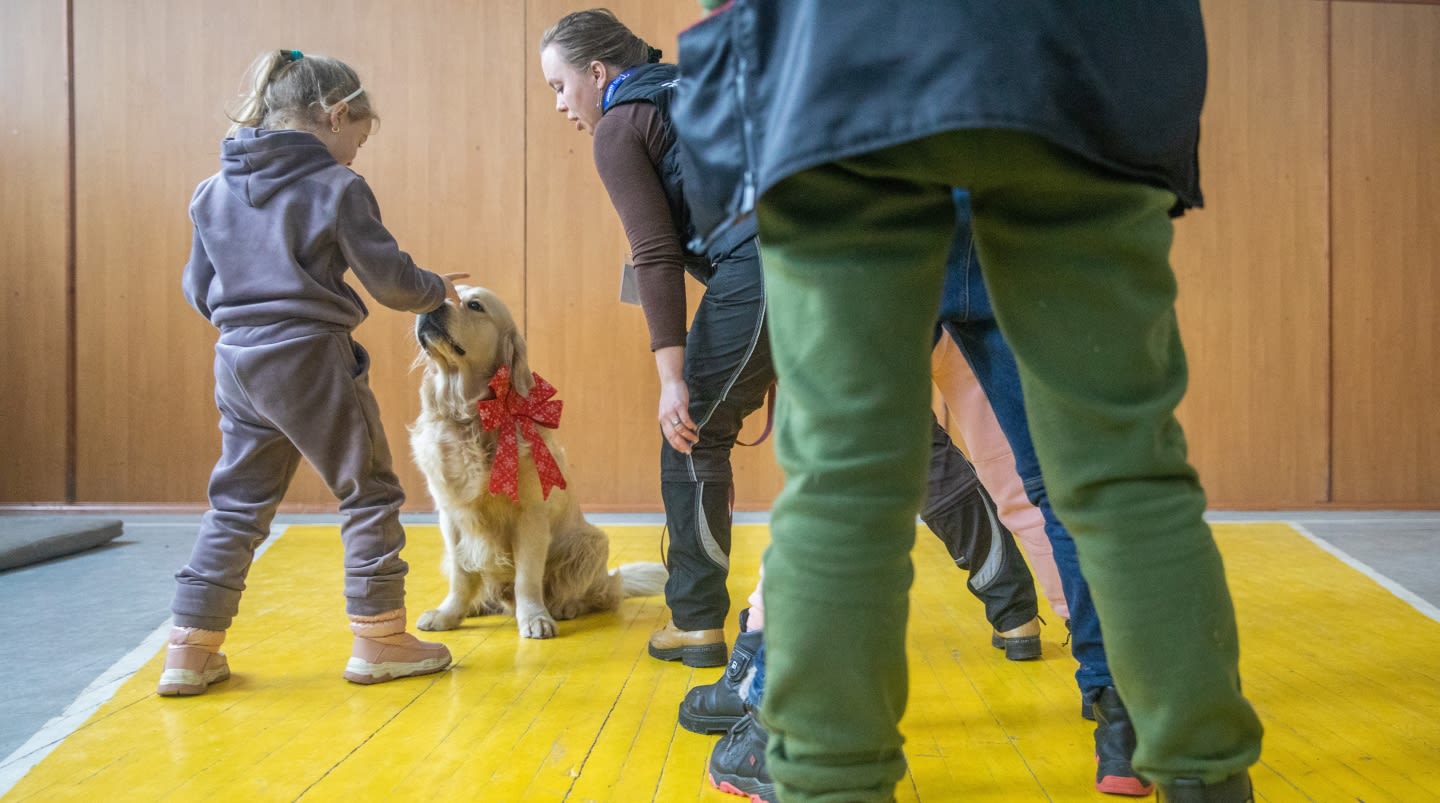
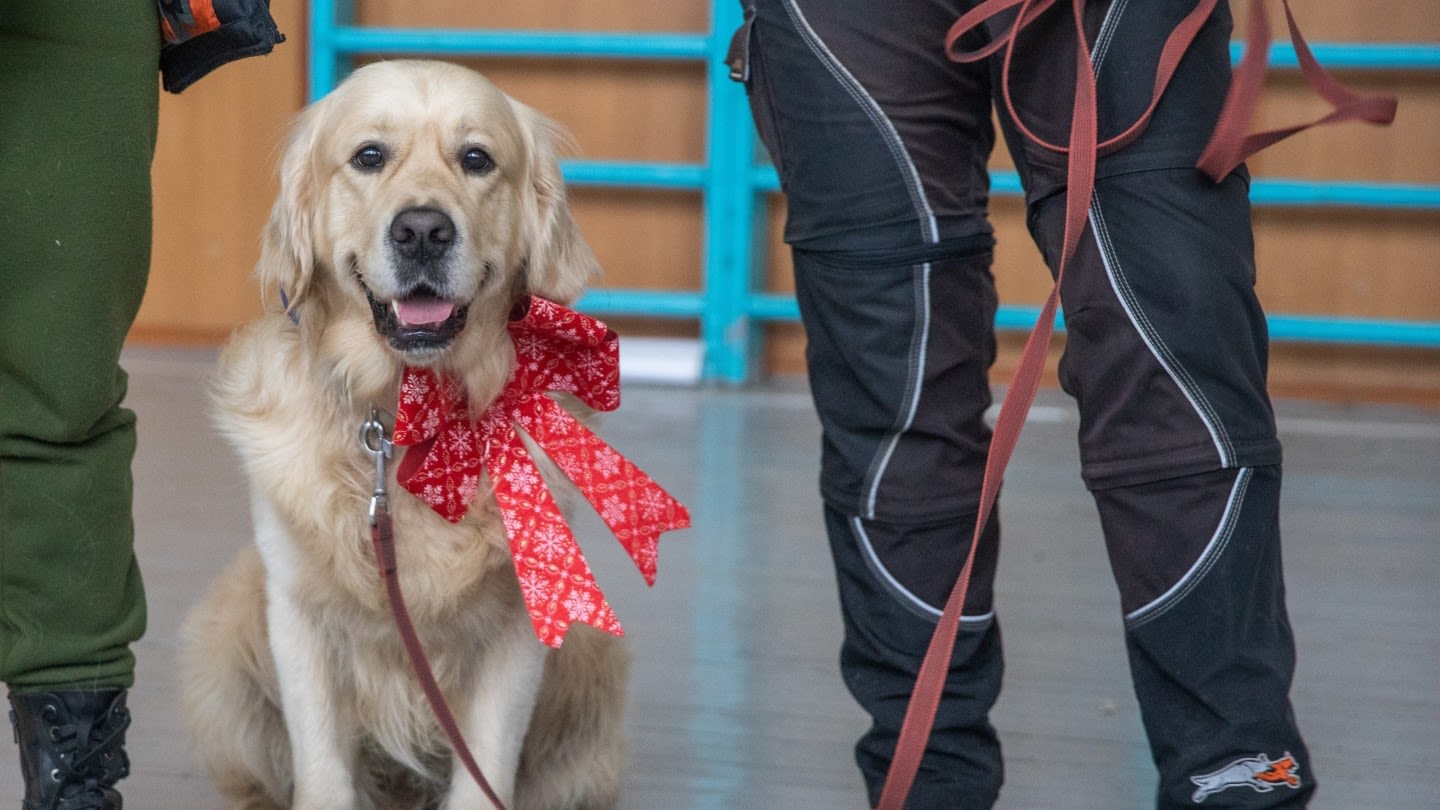
Play

For the playful ones
Social Centres, like Child-Friendly Spaces, are important places for children in Yemen to learn and play.
They give children a special place to be with their friends, or just have a break from everyday life and the war that has been ongoing in the country for the last eight years.
At this social centre in Taiz, Yemen, children play games. Osama's* favourite game to play with his friends is dress up.

Osama* plays dress up at the social centre in Taiz, Yemen. Photo: Save the Children.
Osama* plays dress up at the social centre in Taiz, Yemen. Photo: Save the Children.
Other children enjoy learning new skills such as hairdressing or sewing.
The minute I enter the centre, I feel I have gone to a place where I learn beautiful things that I didn’t know about before.

Latifa* learns to sew at the social centre in Taiz, Yemen. Photo: Save the Children.
Latifa* learns to sew at the social centre in Taiz, Yemen. Photo: Save the Children.
All the children that attend the social centres enjoy having a safe place to play.
We come to the community centre to play instead of playing out in the dirt. So we come to the centre to play with our toys. The community centre is clean and has teachers.

Children playing with blocks at the social centre Taiz, Yemen. Photo: Save the Children.
Children playing with blocks at the social centre Taiz, Yemen. Photo: Save the Children.
Please donate to help children living in conflict in countries like Syria, Ukraine and Yemen.
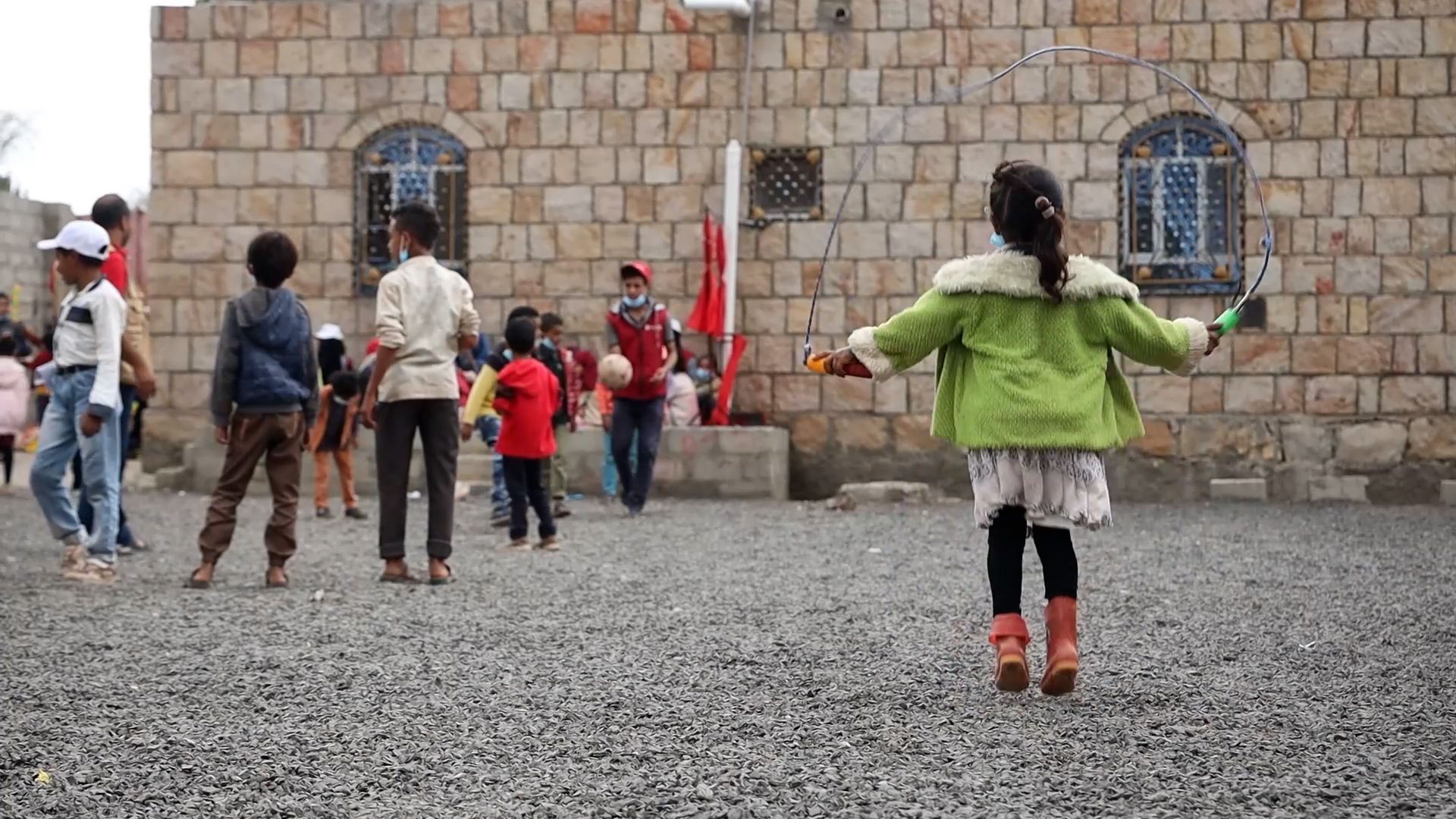
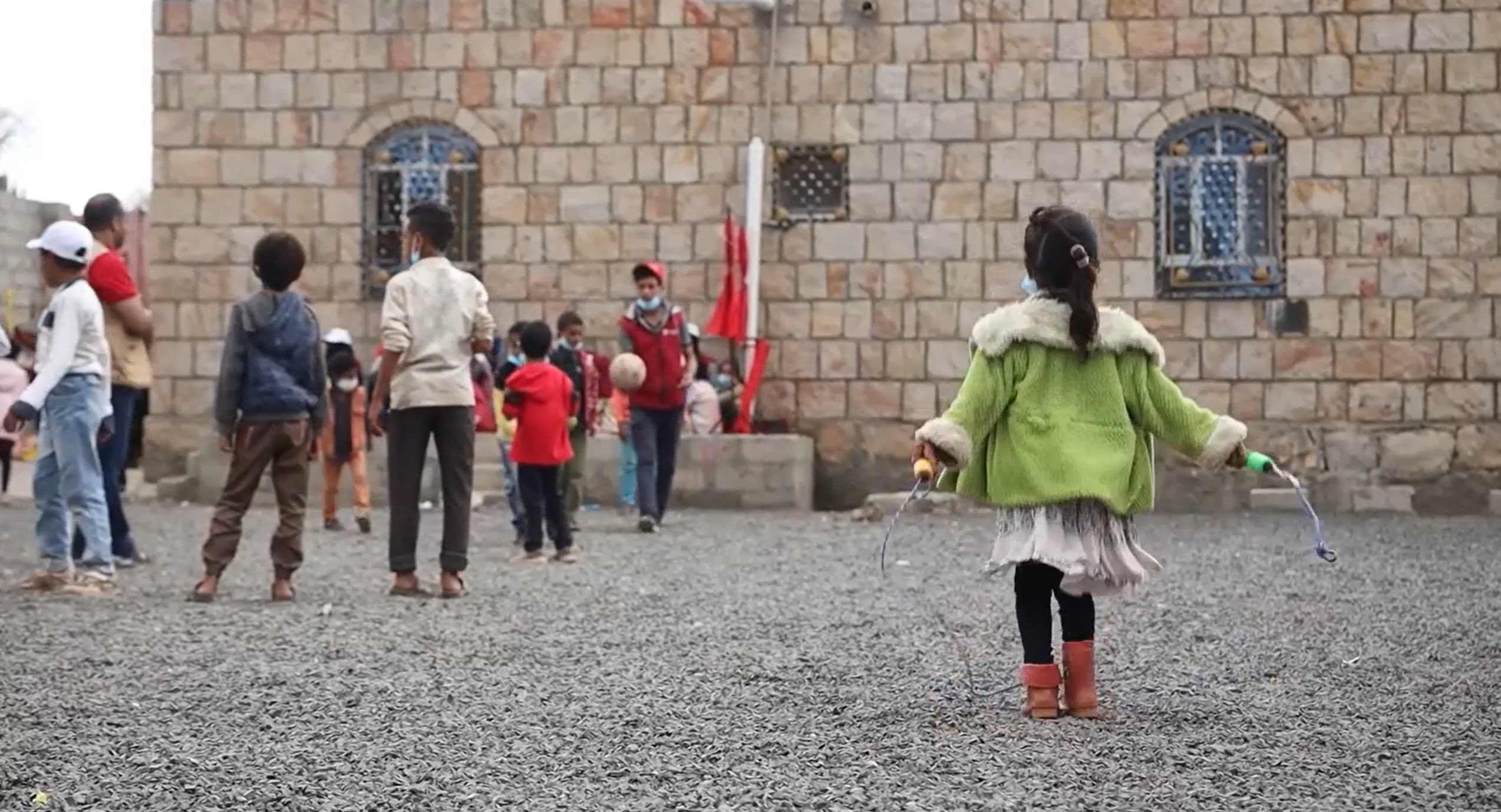
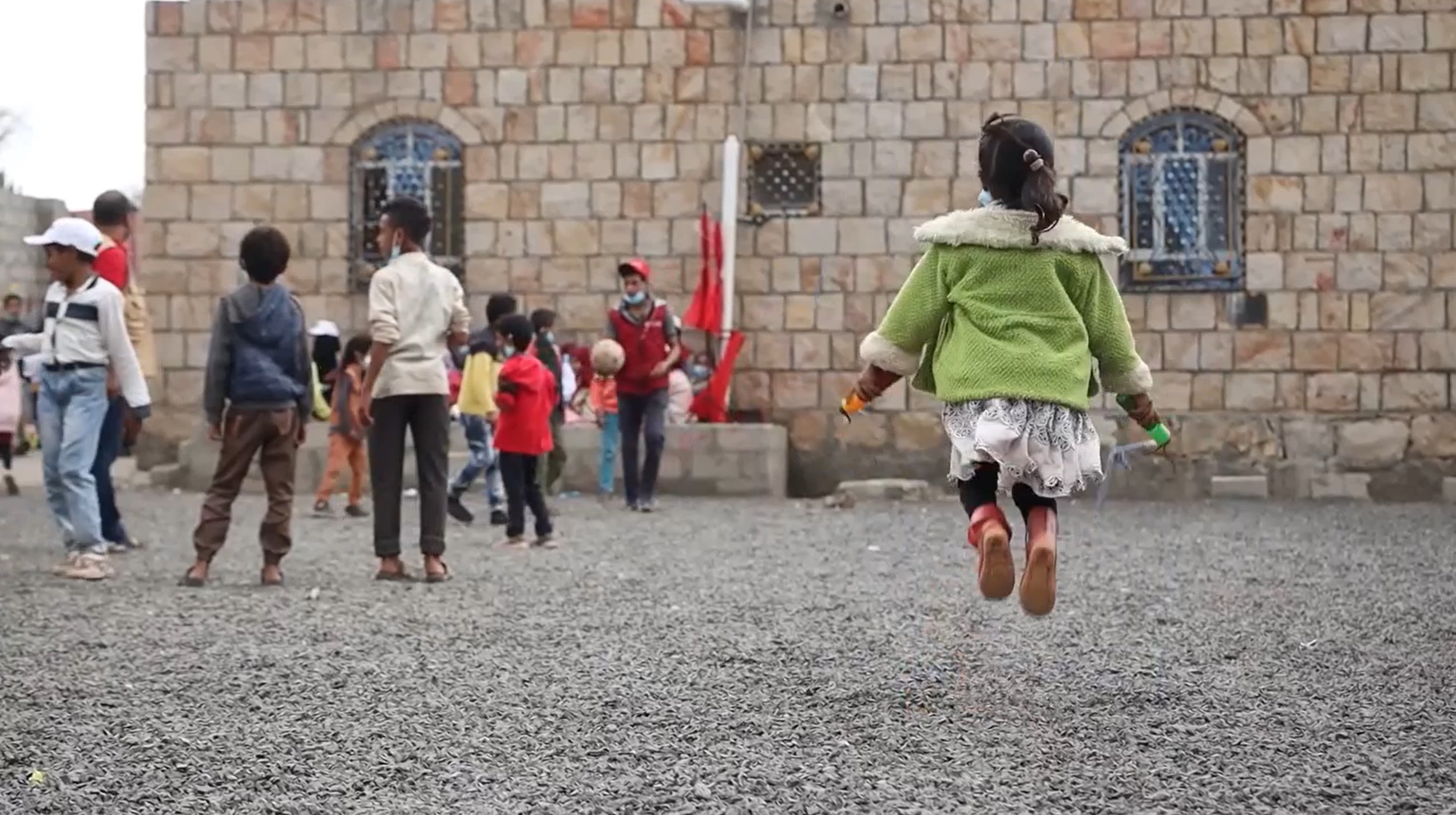
Art Therapy

For the artists
Healing and Education through the Arts for children programme (HEART) was designed by Save the Children as a form of psychosocial support. Through arts-based group activities, children benefit from learning to adapt and overcome the distressing situations they have experienced.
In Poltava, Ukraine, Anton* attends art therapy classes at an art centre supported by Save the Children. He participates in candle-making classes, computer 2D graphic lessons, and painting.

Anton*, 12, paints during an art therapy workshop in Poltava, Ukraine. Photo: Oleksandr Khomenko / Save the Children.
Anton*, 12, paints during an art therapy workshop in Poltava, Ukraine. Photo: Oleksandr Khomenko / Save the Children.
Since attending the art centre, Anton has discovered a new love for painting. He enjoys spending time at the art centre because it offers him a distraction from the ongoing war.
My dream is for the bad things that happen to end and to return home. This is my biggest dream.

Yaroslav and Alina, Founders of a Save the Children supported club, in Poltava, Ukraine. Photo: Oleksandr Khomenko / Save the Children.
Yaroslav and Alina, Founders of a Save the Children supported club, in Poltava, Ukraine. Photo: Oleksandr Khomenko / Save the Children.
Founders of the art centre, Yaroslav and Alina, explain the importance of the art centre for children to be able to express their feelings:
It’s necessary for a child to express their troubles, what hurts, because maybe for us it
isn’t a problem, but for a child it’s a big lump that they cannot share.
Please donate to help children living in conflict in countries like Syria, Ukraine and Yemen.
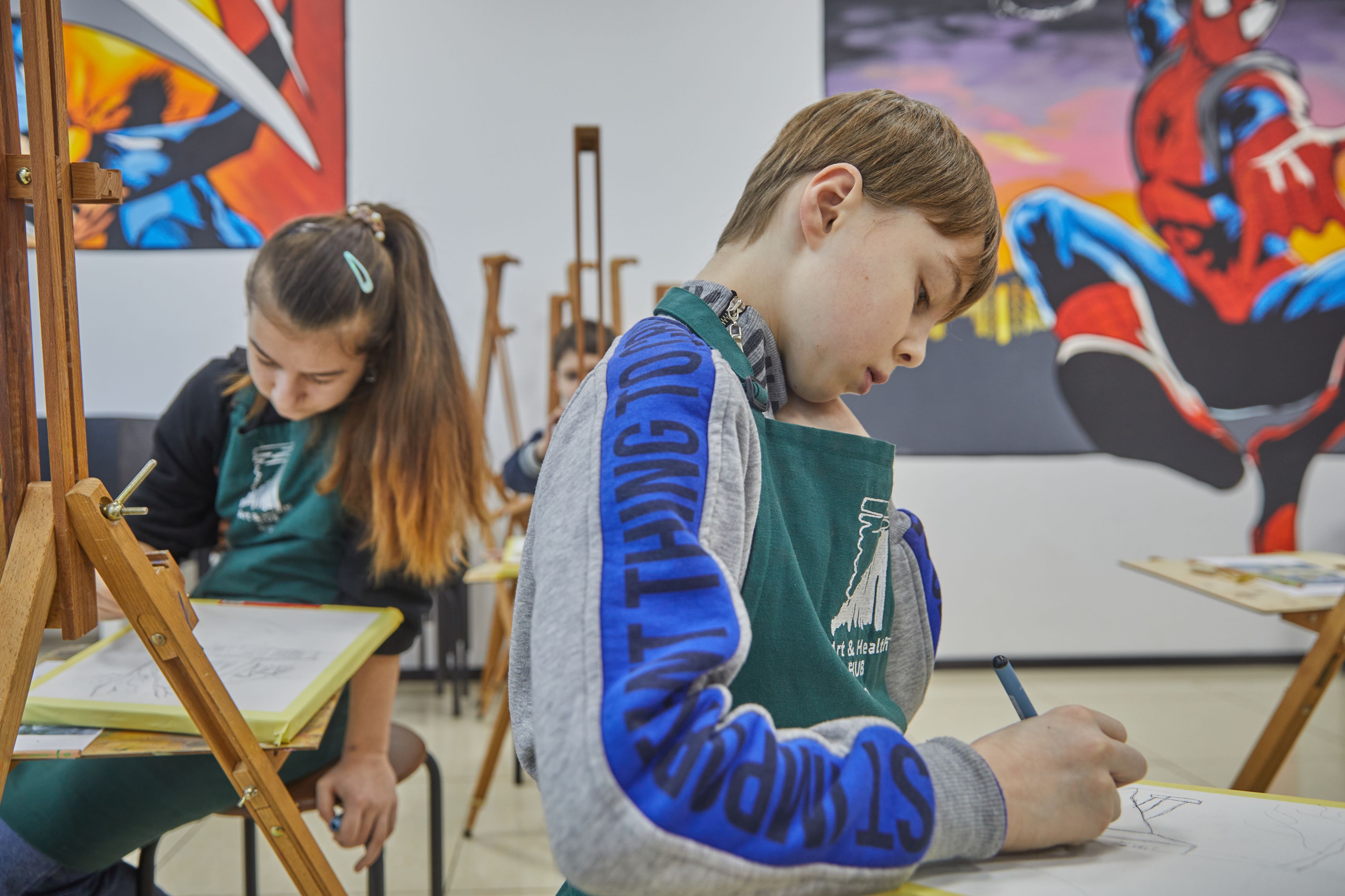
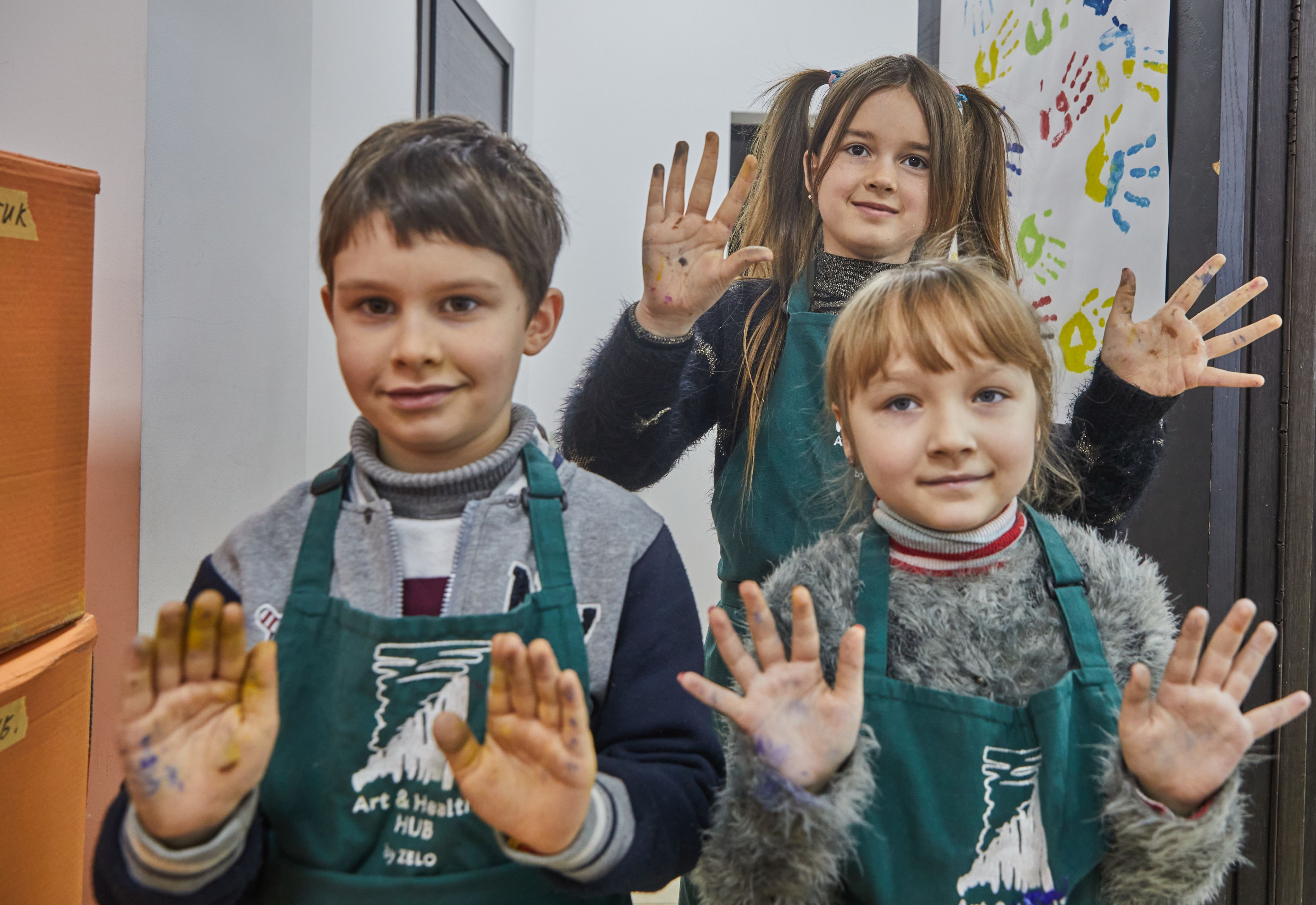
Crafts

For the creators
In this Child-Friendly Space at Al Hol displacement camp in Syria, 11-year-old Amal* and her friends let their imaginations run wild and love to create masterpieces.
In this space, children are able to participate in craft workshops to help them relax, de-stress, and improve their overall mental well-being.

11-year-old Amal* (left) works on her craft project with her friends in the Child-Friendly Space, Syria. Photo: Muhannad Khaled / Save the Children.
11-year-old Amal* (left) works on her craft project with her friends in the Child-Friendly Space, Syria. Photo: Muhannad Khaled / Save the Children.
As we approach Ramadan, Amal and her friends make special lanterns and decorations to celebrate the festive season.
Amal has been living in Al Hol Camp, for the past five years since her family was displaced by conflict.
Amal has been able to disconnect from the reality of conflict and displacement by attending Save the Children’s Child-Friendly Space.
At the Child-Friendly Space, she was introduced to arts and crafts by our specialist staff. She loved it so much that she now wants to be an architect when she is older.
My first project will be building a school for children to learn.
Around 57 000 people live in Al Hol camp, and about half of them are children.
Like all child protection group activities conducted in Save the Children’s Child-Friendly Space, this Ramadan activity aims to promote well-being, enhance resilience and reduce stress.
Please donate to help children living in conflict in countries like Syria, Ukraine and Yemen.
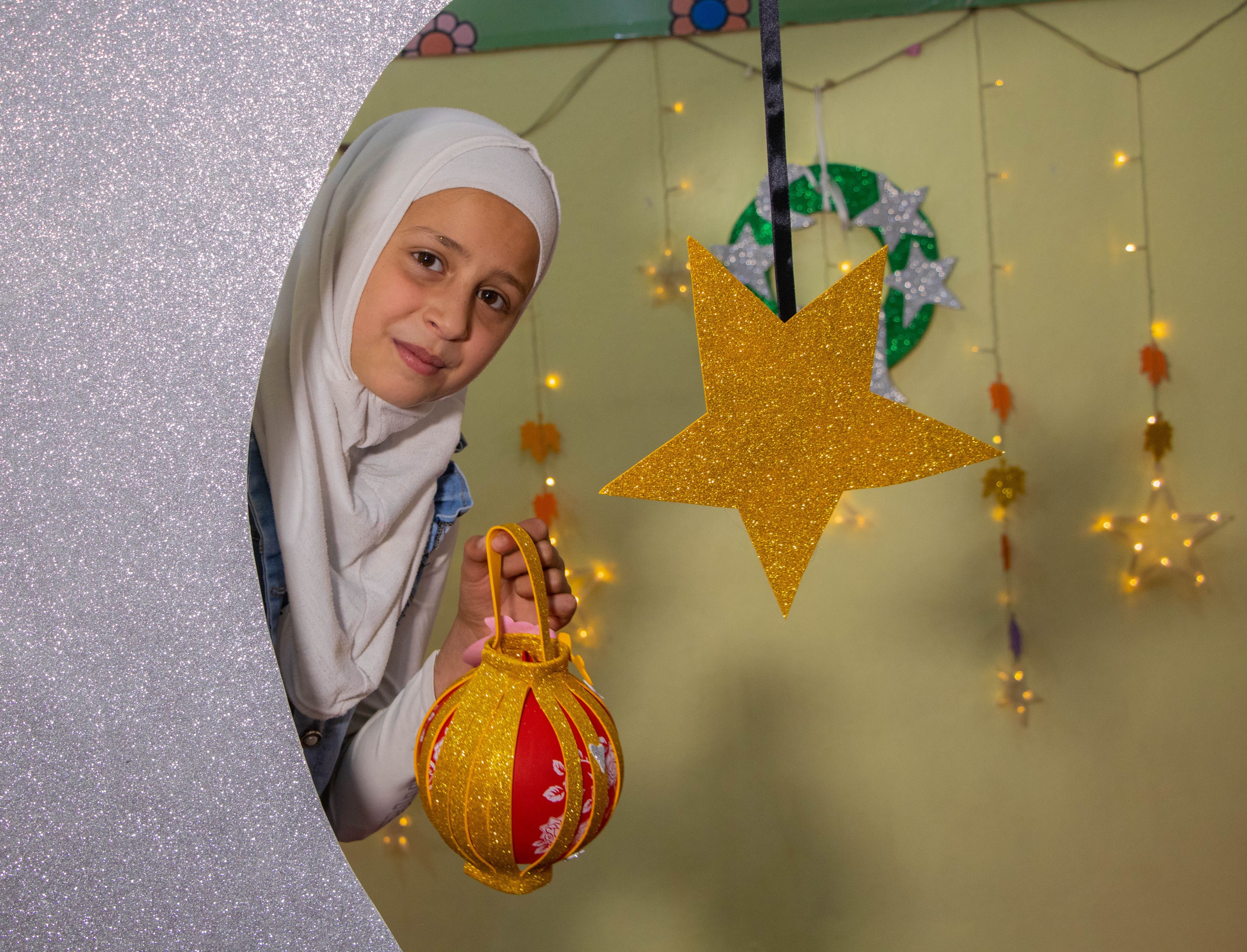
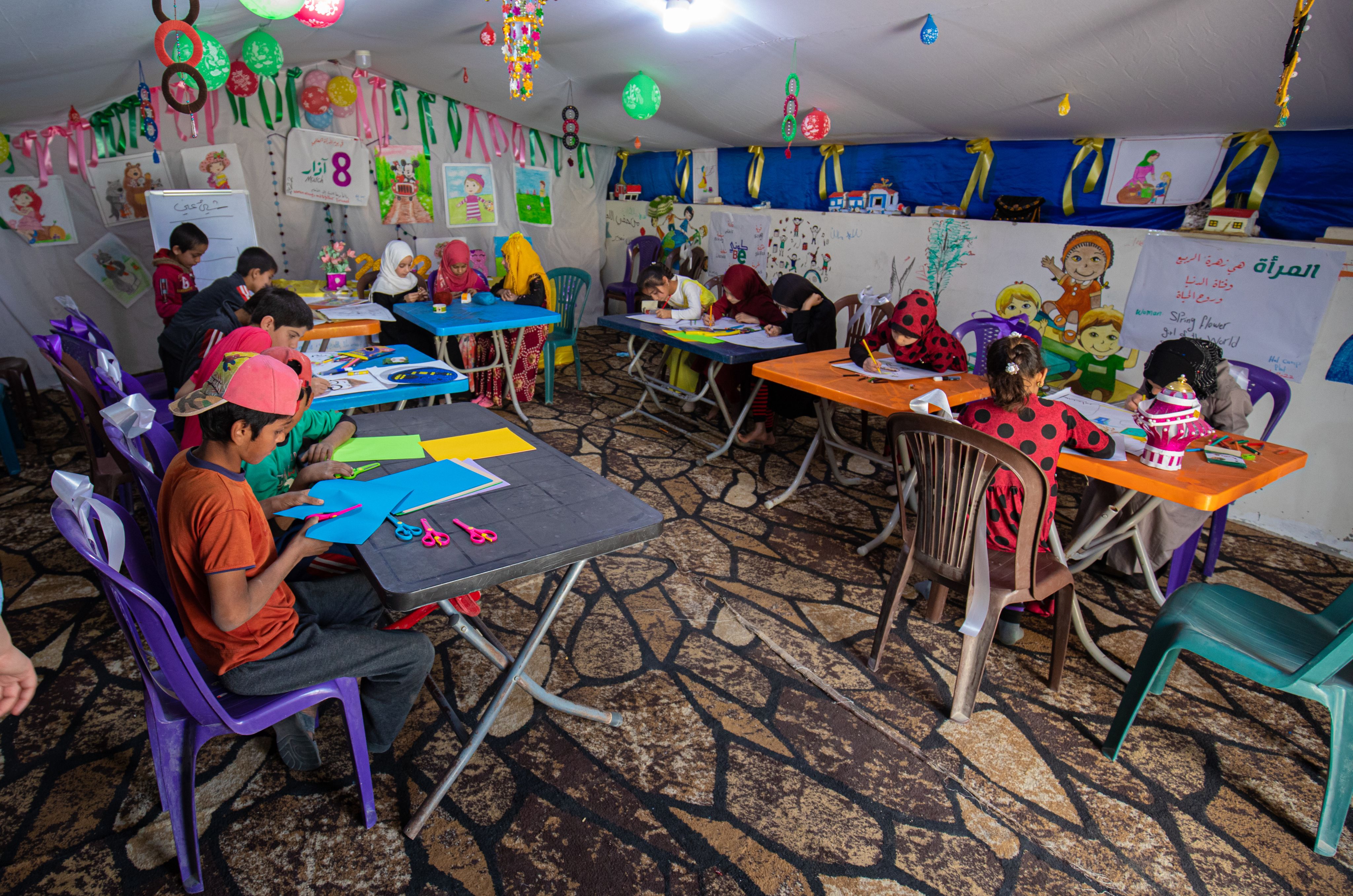
Games

For the game lovers
The conflict in Syria has been ongoing for the last twelve years, meaning that children like Nerjis*, have only ever known fighting and violence in her country.
Four years ago, 8-year-old Nerjis and her family fled conflict in their city. However, on the journey, she became injured and had to have three of the fingers on her left hand amputated. This had a huge impact on Nerjis. Her mother Alif* recalls:
We never imagined that our life will turn out to be a nightmare. Nerjis got injured and lost her fingers. Her agony started ever since.
Nerjis would put toy fingers, and finger-shaped chips in the place of her amputated fingers. She would draw hands while crying.
Nerjis became introverted, she refused to go to school or see or play with other children. Nerjis was left-handed, so she found it hard to adjust to doing things with her right hand.
Eventually, her mother persuaded her to attend a school where Save the Children had set up a Child-Friendly Space for children impacted by the conflict in Syria.

Nerjis* plays games at the Save the Children Child-Friendly Space. Photo: Shiyar Omar / Save the Children.
Nerjis* plays games at the Save the Children Child-Friendly Space. Photo: Shiyar Omar / Save the Children.
Nerjis was encouraged to participate in activities and games with other children.
My teacher [Save the Children Protection Facilitator] taught me how to write with my right hand. I was very happy when I learned how to do it.
All of this helped Nerjis gain more confidence. Now, she dreams of becoming a teacher when she grows up.
Without Save the Children my daughter would not be able to overcome her agony.
Please donate to help children living in conflict in countries like Syria, Ukraine and Yemen.
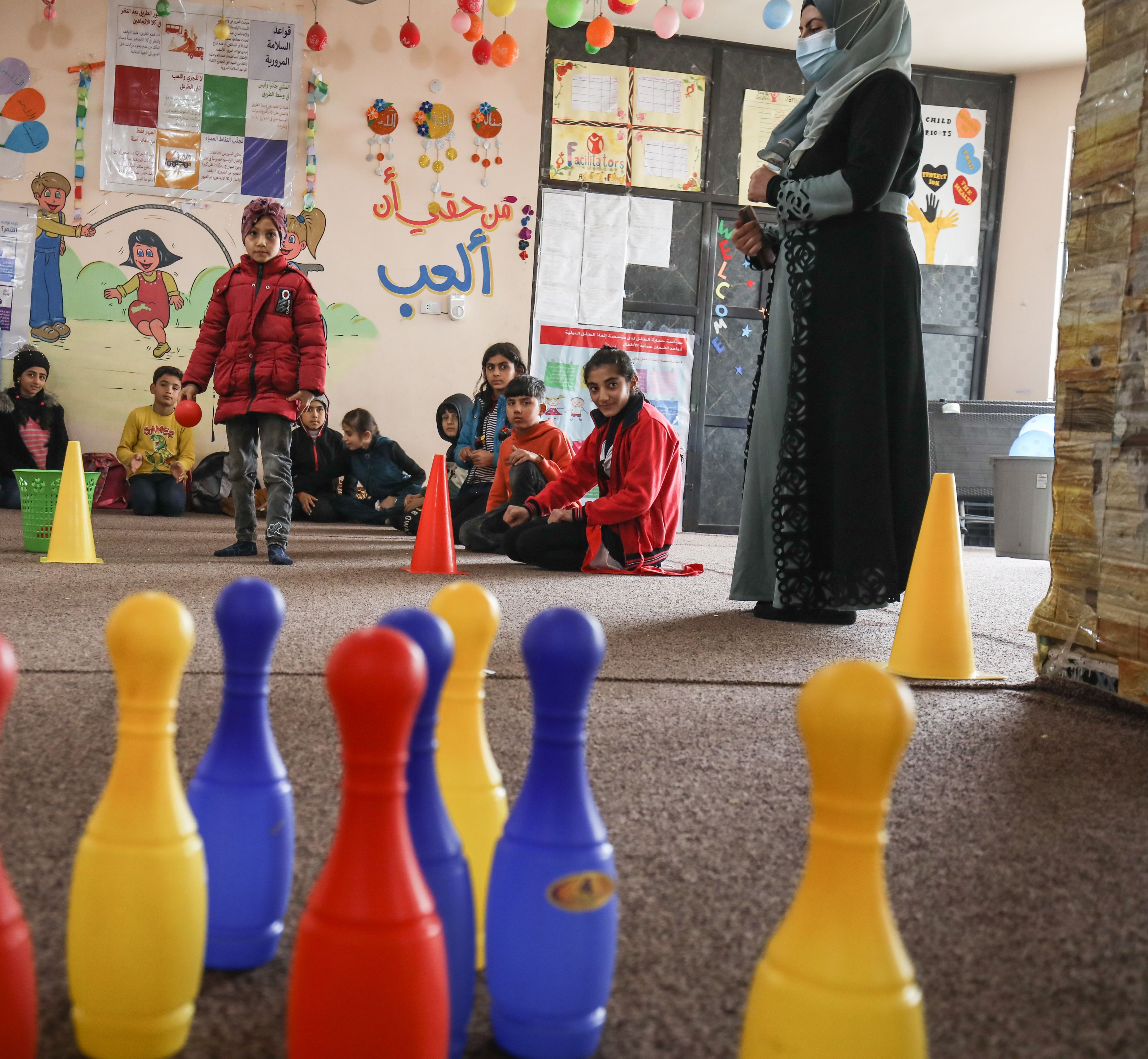
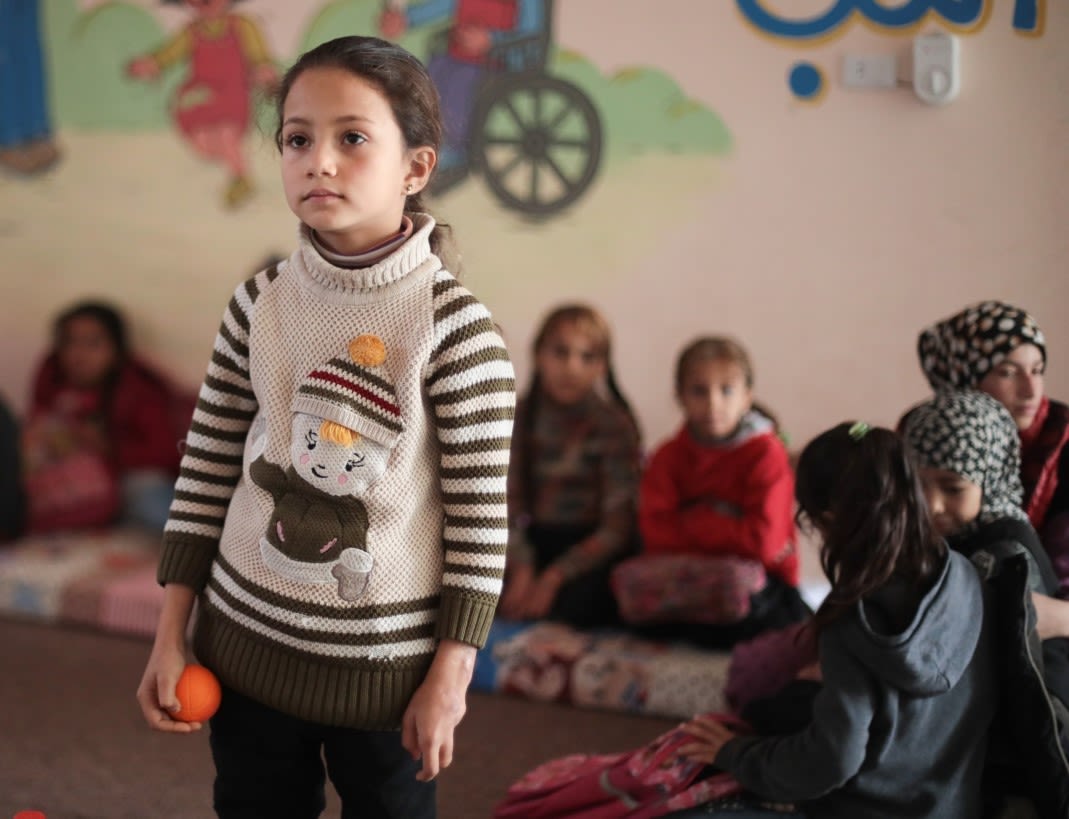
Sports

For the sport fans
Ammar* is 11 years old. He lost his leg after stepping on a landmine when fleeing conflict in Syria several years ago. Now he lives in a displacement camp with his family.
Ammar loves football and watched other children playing football at the camp. However, he wasn’t allowed to join them because they said that his leg injury slowed them down. His mother, Hafiza*, said:
Ammar couldn’t run, play, or attend school like the other children in the displacement camp.
Hafiza enrolled Ammar in a school and a Child-Friendly Space supported by Save the Children to help him adapt to his new life and to learn how to read and write.
At the Child-Friendly Space, I made many new friends. We play, laugh and have a lot of fun together. I forget about my leg when I am there.

Ammar*, 11, playing football with his friend Ahmed* at a Child-Friendly Space in Syria. Photo: Roni Ahmed / Save the Children.
Ammar*, 11, playing football with his friend Ahmed* at a Child-Friendly Space in Syria. Photo: Roni Ahmed / Save the Children.
Ammar's mother never imagined the positive impact that the enrolment in the Child-Friendly Space would have on his daily life.
I will never forget the smile on his face after he came back from his first day. He told me how the teacher and the students played with him.
Please donate to help children living in conflict in countries like Syria, Ukraine and Yemen.
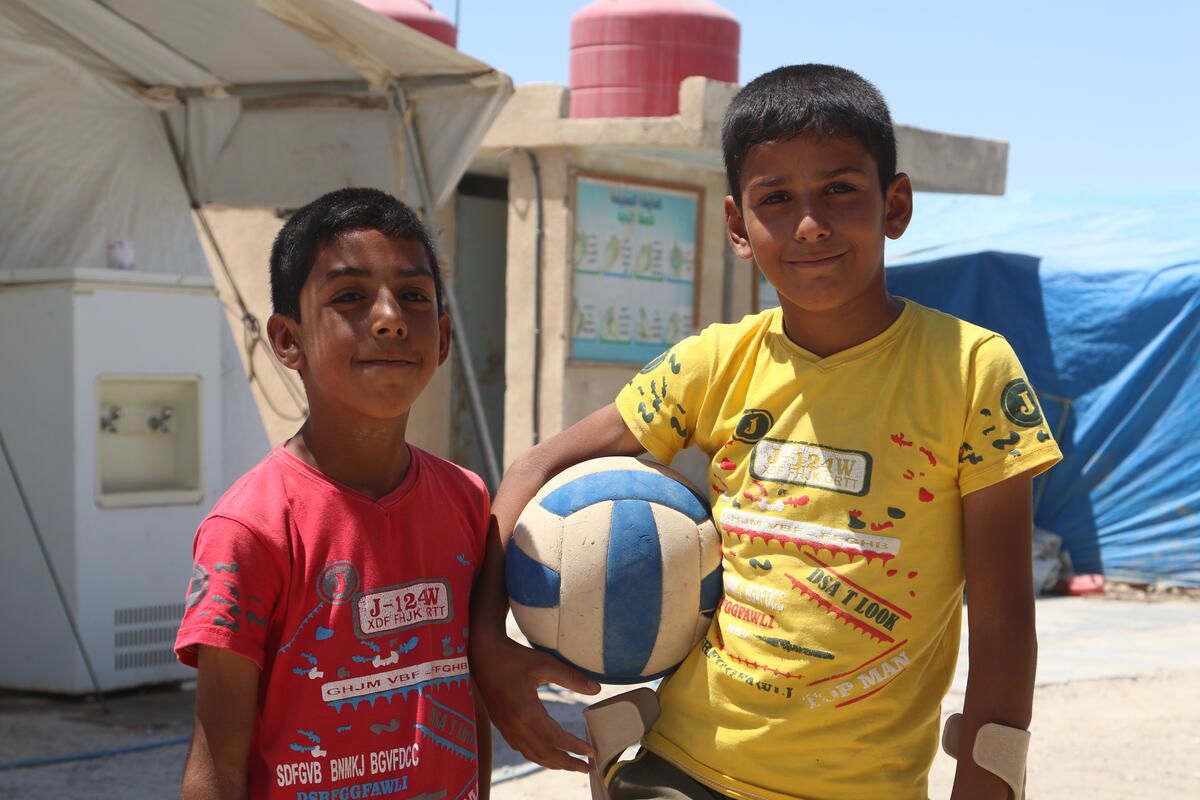
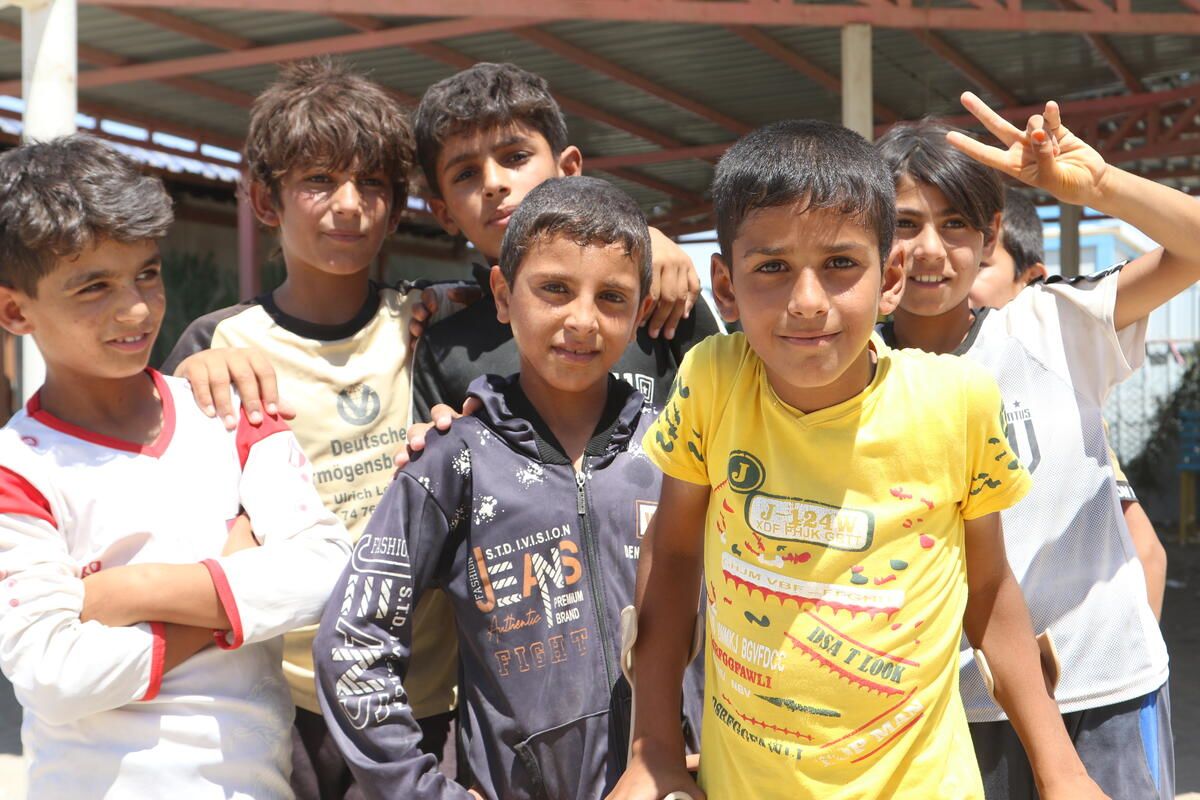
Save the Children, along with its partners, is working across the world to provide children in conflict zones with immediate and long-term support to rebuild their lives.
Our specialist teams are delivering psychosocial and recreational services through safe and supportive environments for children to socialise, play, and ultimately be children again.
Every child, no matter where they live, deserves to live a safe, happy and healthy life.
But, we can't do this without support from people like you. Please donate to help children living in conflict in countries like Syria, Ukraine and Yemen.
Children urgently need your help to piece their lives back together.
